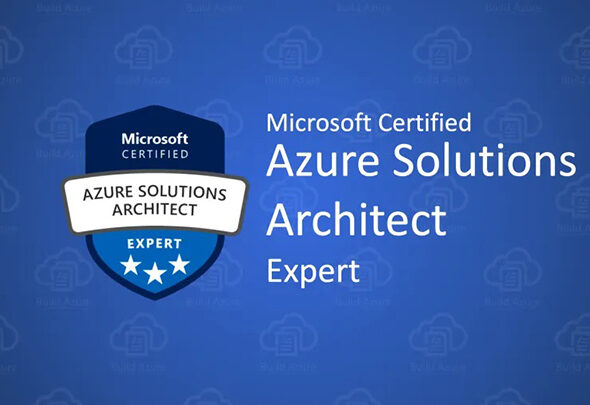Currently Empty: $0.00
About Course
We really hope you’ll agree, this training is way more than the average course on Udemy!
Have access to the following:
-
Training from an instructor of over 20 years who has trained thousands of people and also a Microsoft Certified Trainer
-
Lecture that explains the concepts in an easy to learn method for someone that is just starting out with this material
-
Instructor led hands on and simulations to practice that can be followed even if you have little to no experience
TOPICS COVERED INCLUDING HANDS ON LECTURE AND PRACTICE TUTORIALS:
Introduction
-
Welcome to the course
-
Understanding the Microsoft Environment
-
Having a Solid Foundation of Active Directory Domains
-
Having a Solid Foundation of RAS, DMZ, and Virtualization
-
Having a Solid Foundation of the Microsoft Cloud Services
-
Order of concepts covered in the course
Setting up for hands on
-
Using Assignments in the course
-
Creating a free Azure Account
-
Activating an Entra ID P2 license
Manage Entra (formerly Azure AD) users and groups
-
Creating users, guest accounts, and bulk updates
-
Creating groups
-
Manage licenses in Azure AD
-
Create administrative units
-
Manage user and group properties
-
Manage device settings and device identity
-
Configure self-service password reset (SSPR)
Manage Azure using command line tools
-
Basic concepts of PowerShell
-
Installing PowerShell modules and Connecting to Azure
-
Interacting with Azure AD using PowerShell
-
Using Cloudshell
-
Using Azure CLI / Bash
-
Installing Azure CLI locally
Manage access to Azure resources
-
Understanding the assignment of roles in Azure
-
Create custom role-based access control (RBAC) and Azure AD roles
-
Provide access to Azure resources by assigning roles at different scopes
-
Interpret access assignments
Manage Azure subscriptions and governance
-
Configure management groups
-
Manage subscriptions
-
Manage costs by using alerts, budgets, and recommendations
-
Manage resource groups
-
Apply and manage tags on resources
-
Configure and manage Azure Policy
-
Configure resource locks
Configure access to storage
-
Understanding storage accounts
-
Create and configure storage accounts
-
Configure Azure Storage firewalls and virtual networks
-
Configure Azure AD authentication for a storage account
-
Manage access keys
-
Generate shared access signature tokens
-
Configure stored access policies
-
Configure storage encryption
Configure and manage storage accounts
-
Create import and export jobs
-
Manage data by using Azure Storage Explorer and AzCopy
-
Understanding Azure Storage redundancy
-
Implement Azure Storage redundancy
-
Configure object replication
Configure Azure Files and Azure Blob Storage
-
Create an Azure file share and Configuring storage tiers
-
Configure Azure Blob Storage
-
Configure blob lifecycle management
-
Configure blob versioning
Automate deployment of resources by using ARM templates or Bicep files
-
Interpret an ARM template or a Bicep file
-
Modify an ARM template
-
Deploy a template
-
Create or modify an existing Bicep file
-
Deploy virtual machine (VM) extensions
Create and configure virtual machines
-
Create a VM
-
Create a VM using PowerShell
-
Manage images by using the Azure Compute Gallery
-
Configure Azure Disk Encryption
-
Move VMs from one resource group to another
-
Manage VM sizes
-
Add data disks
-
Configure VM network settings
-
Configure VM availability options
-
Deploy and configure VM scale sets
Provision and manage containers in the Azure portal
-
Understanding Azure Containers
-
Configure sizing and scaling for Azure Container Instances
-
Understanding container groups for Azure Container Instances
Create and configure an Azure App Service
-
Understanding App Service Plans
-
Create an App Service plan
-
Configure scaling settings in an App Service plan
-
Create an App Service
-
Secure an App Service
-
Configure custom domain names
-
Configure backup for an App Service
-
Configure networking settings
-
Configure deployment settings
Configure and manage virtual networks in Azure
-
Visualizing virtual networks and subnets in Azure
-
Create and configure virtual networks and subnets
-
Creating virtual networks with PowerShell
-
Create and configure virtual network peering
-
Configure private and public IP addresses
-
Configure user-defined network routes
Configure secure access to virtual networks
-
Create and configure network security groups (NSGs) and ASGs
-
Evaluate effective security rules
-
Implement Azure Bastion
-
Visualizing service endpoints and private endpoints
-
Configure service endpoints and private endpoints
Configure name resolution and load balancing
-
Configure Azure DNS
-
Visualizing Azure load balancing
-
Setting up two VMs for load balancing
-
Configure an internal or public load balancer
-
Configure load balancing rules for two VMs
-
Configure inbound NAT rules
-
Configure SNAT outbound rules
-
Removing the Load Balancer before moving on
-
Start creating an Azure Application Gateway
-
Specifying a back-end pool while creating an Application Gateway
-
Setting the routing rules while creating an Application Gateway
-
Finalizing the gateway creation
-
Removing resources no longer needed
Monitor resources in Azure
-
Configure and interpret metrics
-
Configure Azure Monitor Logs
-
Query and analyze logs
-
Set up alerts and actions
-
Configure monitoring of VMs, storage accounts, and networks by using VM insights
-
Configure and use Azure Monitor for networks and on-premise connectivity
-
Use Azure Network Watcher
-
Troubleshoot external networking
-
Troubleshoot virtual network connectivity
Implement backup and recovery
-
Create an Azure Recovery Services vault
-
Create and configure backup policy
-
Perform backup and restore operations by using Azure Backup
-
Configure Azure Site Recovery for Azure resources
-
Configure and review backup reports
Finishing Up
-
Where do I go from here?
Course Content
Introduction
-
Course Overview
-
Azure Cloud – Features, Uses and Benefits
-
Getting Familiar with Azure Cloud Console
-
Lab – Access & Tour Azure Portal



